For centuries, people have come up with fantastic characters for their stories. Over time, some images became so ingrained that they were identified with realistic images and became part of the culture of peoples.
The article presents the most unusual and popular mythical creatures - a list that is characteristic of the Slavic peoples.
10
Pharaonka

Pharaonka is a two-headed spirit of water, is a prototype of a mermaid. It is a semi-human - a half-fish. According to Russian folklore, these mythical creatures originated from the Egyptians, drowned in the Black Sea, who chased the biblical characters - Moses and the Jews. The horses on which the chase was arranged turned into half-fish-semicons. There is a legend that the pharaonks are attached to a passing ship and ask the passengers of the ship: "When is the day of judgment?".If you do not answer the pharaohs, they will not fall behind. The interest of sea creatures towards the end of the world is argued by the legend that they are doomed to be in this guise before the end of the world. According to some other legends, the pharaohs are also credited with the features of cannibalism. At night they leave the sea and devour the people they find on the way.
9
Nightingale robber
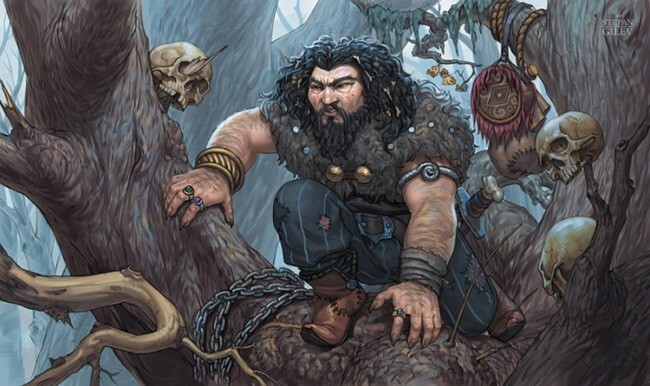
Nightingale robber - a character of East Slavic mythology, killing all who stand in his way a wild whistle. The mythical creature was depicted either as an anthropoid, or a monster with wings of a bird. The epics say that Nightingale the robber has a well-protected theater, in which his family lives. The image of a mythical creature in Russia symbolized the enemy forces of that period. According to legend, Nightingale was able to defeat the hero Ilya Muromets.
8
Wolverine
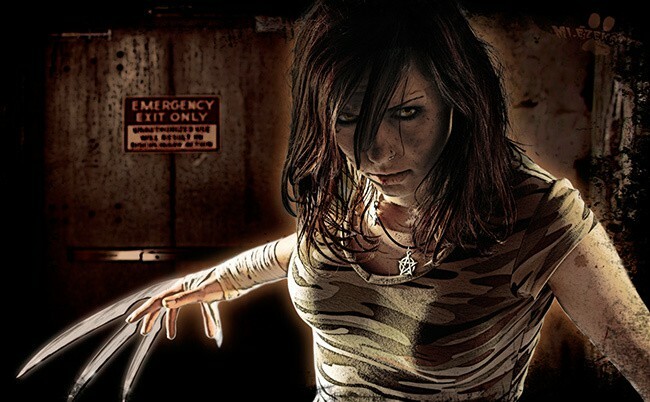
Wolverine - a fantastic character in the disguise of a female beast living in the fields. The image of a demonic being is similar to a mermaid. He is described as a naked woman with her hair loose, which she constantly combs. Next to her there is always a crying child. Seeing a man, Wolverine immediately hides. There is a more modern prototype of the behemoth. Ethnographer Drevlyansky offered his image of Wolverine as a half-human-half-lion. The beast moves on its hind legs. Hemp fields are considered to be the habitat. At night, the monster goes hunting and rushes to meet people. Rosamaha suffocates the victim, gnaws through the skull and sucks the brain.
7
Snake Gorynych

Snake Gorynych - a fairy-tale image of Russian epics in the form of a fire-breathing dragon with several heads. He lives in the mountains next to the fiery river Smorodinoj and protects the bridge over which the dead fall into another world. In the Russian epics it is said that Gorynych hunts beautiful girls to feast on them and keep the people in awe. In the legend about the hero Dobryne Nikitich it is said that he kills cubs of monsters, which have nothing in common with the frightening appearance of Gorynych, but are similar to ordinary vipers. Serpent Gorynych serves another mythological character - Koshchei the Immortal.
A fabulous creature was erected a sculpture in 2000 in Petrozavodsk.
6
Kikimora

Kikimora( Shishimora) is a mythical female creature that lives in apartment buildings and harms the owner. According to the giving of Kikimora, he chooses the dwelling where the person hanged himself, the child died or the deceased was not celebrated. It is believed that Kikimora is the wife of Leshoy. The mythical being is an ugly dwarf with non-proportional forms of the head and trunk.
According to popular belief kikimors live in attics, under the floor and not even in living quarters. Being in the house, they do not allow the owners to sleep, interfering with rustling and crying, and can also beat dishes and choke homeowners.
5
Frost
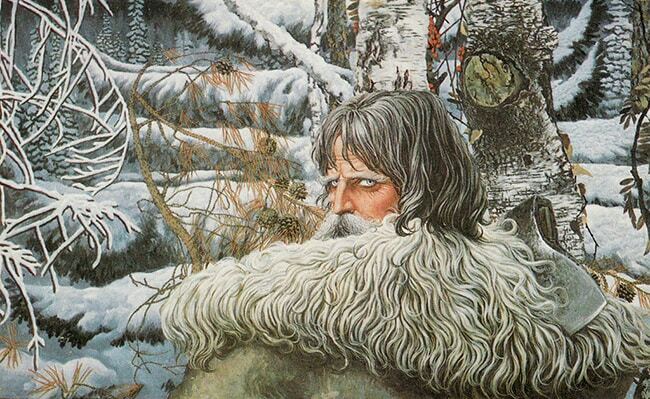
Frost - a fairy-tale character, in ancient times was the object of worship of the Eastern Slavs. The formed image of Frost is a big old man with a long white beard, which comes from the north and brings with it winter cold. Slavs during the Christmas season and at Easter performed the ritual of the invitation for the festive table of Frost, so that he did not touch the future harvest. In modern times, the mythical character is called Santa Claus and he is the symbol of the New Year. The image of the hero has completely changed: now it's not an angry old man ruining crops, but a kind grandfather who comes to children with presents on New Year's Eve.
4
Volkolak
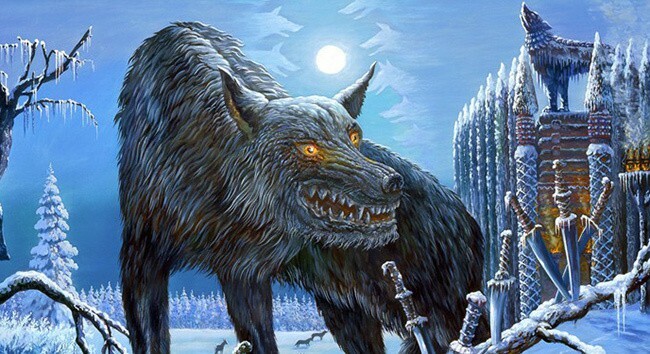
Volkolak is a character of Slavic mythology in the form of a human werewolf, a sorcerer, capable of accepting the appearance of a wolf. In the popular belief, there are two types of wolves. The first type is evil sorcerers, turning themselves into wolves and attacking people, they are also called ghouls or vampires. The second type is an enchanted man who takes the image of the beast at night. He suffers from his appearance and the enchantments sent to him, but does not harm others.
3
Basilisk

Basilisk is an image with a cock head, dragon wings, snake tail and frog legs. On the head is a red crest in the form of a crown. The whole body of the mythical character is covered with scales. In general, its appearance resembles a huge lizard that can kill with the help of a look or breathing. In the biblical subjects, there is a mention of the devilish creation, and in the Middle Ages the Basilisks were considered real animals. In modern times, the image of a mythical creature is used to depict some cities on the arms. For example, the coat of arms of Moscow bears the image of St. George and the snake, which is the prototype of the basilisk.
2
Baba-yaga
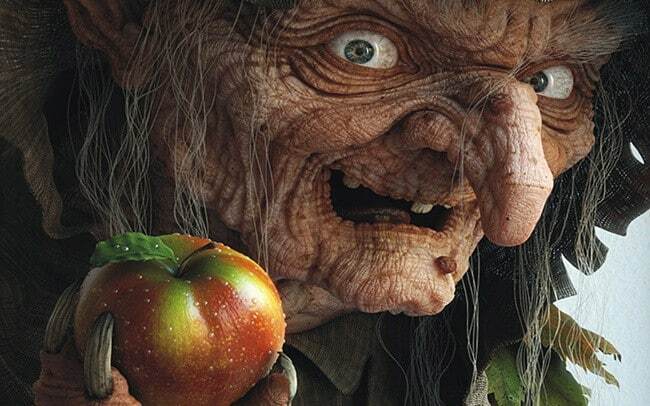
Baba-yaga - one of the fairy-tale characters of Russian folk tales and Slavic mythology. It is depicted in the form of an ugly old witch who possesses magical objects. Baba-yaga also performed with the ancient Slavs as a ritual sacred character. In folklore, she is credited with a tendency to cannibalism. The mythical being is referred to both the world of the dead and the world of the living. In modern interpretation Baba-yaga is the master of the forest and wild animals, and also the keeper of the kingdom of the dead. It is believed that her bony leg is a conduit to the world of the dead.
1
Alkonost

Alkonost is a bird of paradise with a maiden head and hands. Her image goes back to the myth of the maiden Alcyone, whom the gods turned into a bird. Ancient Greek myth is intertwined with the Slavic legend of the Syrin bird. Often these two creatures are depicted together. According to legend, a bird of paradise carries eggs to the depths of the sea. After 7 days, eggs pop up and the sea is calm. The alconast takes the eggs and incubates them on the shore. The singing of a bird of paradise is fascinating and makes you forget everything. According to popular belief during the Apple Spa in the morning in the garden arrive birds Sirin and Alkonost. Sirin cries and her tears fall on the fruit in the form of dew. Alkonost laughs and looks like apples from tears. After that, all the fruits on apple trees become healing.
